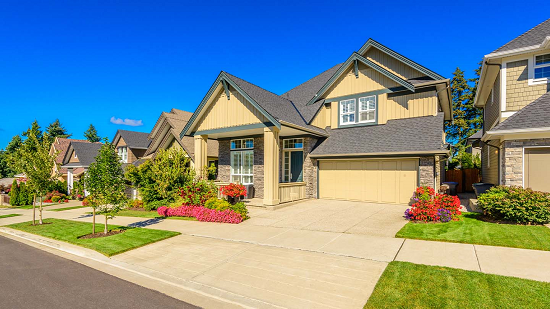Midcentury modern homes: 10 things to know before buying

Midcentury modern homes have long captivated the hearts of homeowners and design enthusiasts alike. But is a midcentury modern house right for you? Let’s explore the question “What is midcentury modern?” and learn a little more about these historically significant and uniquely charming homes.
What is midcentury modern?
The midcentury modern style is an architectural and design movement from the mid-twentieth century. The style is characterized by clean lines, minimalist design and an emphasis on natural beauty. Midcentury modern homes were designed to blend seamlessly with their surroundings, often featuring large windows, open floor plans and post-and-beam construction to accentuate the surrounding nature.
One of the key features of midcentury modern homes is the use of materials such as glass, steel and concrete that allowed for more simple shape design. Midcentury style typically adhered to the design principle that form should follow function, meaning the design and layout should serve its intended purpose without placing undue weight on looks alone. Midcentury houses often featured large windows to allow natural light to flood the home and provide a sense of openness, which many cite as one of the style’s chief attractions.
Why choose a midcentury modern home?
There are several reasons you might find a midcentury modern home attractive. From their aesthetic appeal to potential energy efficiency, midcentury houses offer a unique blend of distinct style, function and historical charm. Let’s look at a few potential benefits of owning a midcentury modern home:
Timeless appeal
Midcentury modern homes have a distinctive design that has remained enduringly popular long after their inception. Their minimalist aesthetic and clean forms have made them a classic choice for homeowners interested in sleek, functional architecture and a direct connection to nature.
Energy efficiency
Many midcentury modern homes were designed with energy efficiency in mind, placing great emphasis on natural light, enhanced airflow and insulating materials. In some midcentury houses, this might potentially result in lower energy consumption and a reduced carbon footprint, possibly making them an eco-friendly choice for environmentally conscious buyers.
Outdoor spaces
A common feature of midcentury modern homes is clean integration between indoor and outdoor spaces. As part of their connection with nature, many midcentury modern homes make use of features like large sliding doors and spacious patios that let homeowners move seamlessly between interior and exterior spaces.
Customization options
Many midcentury modern homes were built using modular or prefabricated construction methods, potentially making it easier for homeowners to update or expand their living spaces at a later point. This flexibility might allow for a higher degree of customization and personalization, helping homeowners create a unique and highly functional space.
Considerations for buying a midcentury modern home
While midcentury modern homes can offer many appealing features, there are some potential challenges. Here are a few factors to keep in mind:
Maintenance costs
Due to their age, some midcentury modern homes may require more upkeep than newer properties. Thoroughly inspecting the home’s electrical wiring, plumbing and insulation might help identify any potential costs for down the road. Additionally, homeowners may need to replace original features like aging windows or outdated heating systems with more efficient, modern counterparts.
Location challenges
Because natural surroundings feature heavily in the midcentury style, many midcentury modern homes were built in environments that suited the style — sometimes off-the-beaten-path. This might make finding a midcentury style house in your desired location more challenging.
Preservation restrictions
Some midcentury modern homes may be subject to historic preservation restrictions, which could limit your ability to make alterations or upgrades. Before purchasing a midcentury modern home, researching local preservation ordinances and understanding how they may impact your plans might help stave off any unexpected surprises once you’ve moved in.
Tips for finding and purchasing midcentury modern homes
When it comes to finding and purchasing the right midcentury modern home for you, having a sound strategy can make all the difference. Which factors should you keep in mind when searching for your midcentury modern home?
Working with specialized real estate agents
Partnering with a real estate agent who specializes in midcentury modern style homes might be helpful, as they’ll typically have a deeper understanding of the market and may be able to help you locate midcentury houses that meet your criteria. They may also be able to provide unique insights into some of the challenges associated with buying a midcentury modern home.
Researching the individual home
Understanding the history of the specific home you’re looking at can help you make an informed decision. This could mean researching the architect, builder and any significant alterations or renovations that have taken place over the years. Doing so may help you gauge the home’s authenticity and highlight any potential maintenance or renovation requirements in the future.
Conducting a thorough inspection
Having the property inspected by a professional familiar with midcentury modern style homes can help further identify any unique challenges the property may represent. A good inspection may also help you assess future renovation potential and determine ways in which you could shape the property into a potential forever home.
In summary
What is midcentury modern? Midcentury modern homes were a popular architectural style between the 1940s and 1960s that emphasized minimalist shape design, open spaces and an unobstructed connection to natural surroundings. These homes are prized by enthusiasts and homeowners who appreciate their distinct style and historical significance. Additionally, some midcentury modern homes may offer other perks, such as potentially higher energy efficiency and improved customizability, as well as a few unique downsides in the way of higher upkeep and possible preservation restrictions.



